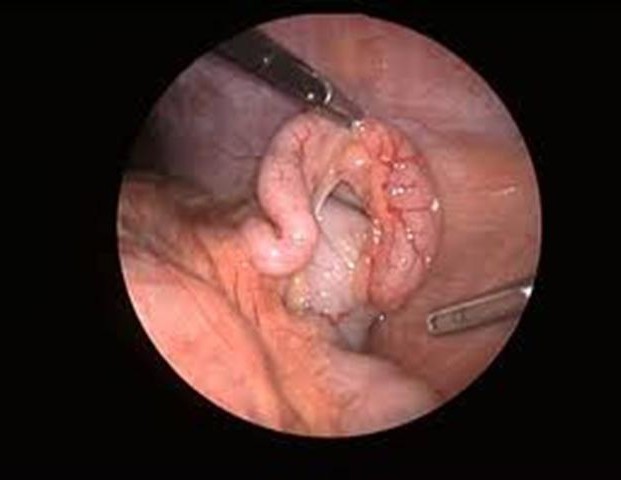It would seem that almost everyone knows exactly where the appendix is. In fact, there are several options for its deployment.
The classical location of the appendix suggests its departure from the cecum slightly below the place where the ileum flows into it . At the same time, its tip is directed downward, inward and posteriorly. It is this position that allows the appendix to project onto the anterior abdominal wall at the so-called Mc Burney point. It is located on the border of the middle and lower third line, passing from the navel to the anterior superior iliac spine. That is how experts most often answer the question of where the appendix is located.
It is worth noting that the aforementioned location option, although it is classic, but there are still a number of its varieties, which are also not pathological.
One of the most common non-classical variants of the norm is the pelvic position. At the same time, it occurs an order of magnitude more often among representatives of the beautiful half of humanity than among men. If the appendix has this arrangement, then its top will freely hang in the pelvic cavity. It should be remembered that in the event of inflammation of this organ, the clinical picture will be slightly different from the classical one. The patient will have pain in the lower abdomen, as well as frequent urge to defecate.

Sometimes you have to think about where the appendix is located in a person when a patient develops a high temperature, an increase in the level of white blood cells, and also severe pain in the lumbar region. The fact is that the vermiform appendix can well be located not only in the abdominal cavity, but also go beyond it. At the same time, it is much more difficult to limit the inflammatory process when it occurs. This variant of the normal location of the appendix in many cases significantly complicates the diagnosis of appendicitis.
Another common option for the location of the appendix is subhepatic. In this case, it is even more difficult than in previous cases to establish where the appendix is located. Photos taken on an ultrasound of the abdominal cavity, allow us to establish the fact that the vermiform appendix, moving away from the cecum, goes up. With this arrangement, inflammation of this organ can lead to the development of a clinical picture very similar to that observed during cholecystitis.
In addition, the tip of the appendix can be hidden behind the stomach. In this case, it is even more difficult to establish where the appendix is located. The fact is that with this arrangement, in case of inflammation, the clinical picture of gastritis will develop. The pain in the patient will be localized not in the right iliac region, but in the epigastrium. In this case, he experiences nausea, sometimes turning into vomiting.
Often the atypical location of the appendix leads to difficulties in diagnosing inflammation of this organ. It is for this reason that absolutely every doctor should remember the possible options for finding him. Only in this way will it be possible to conduct a rational treatment of appendicitis in time.